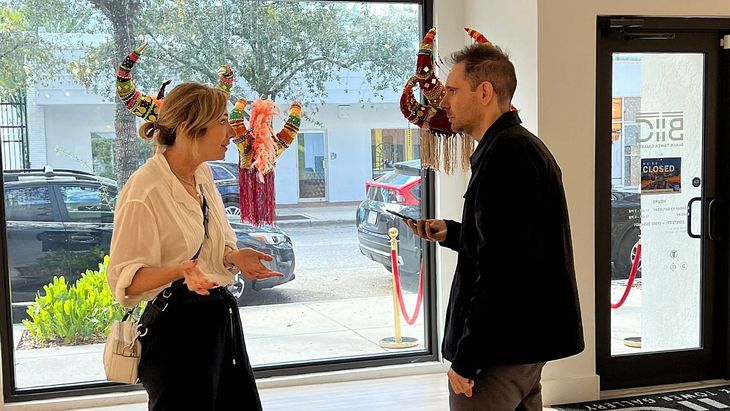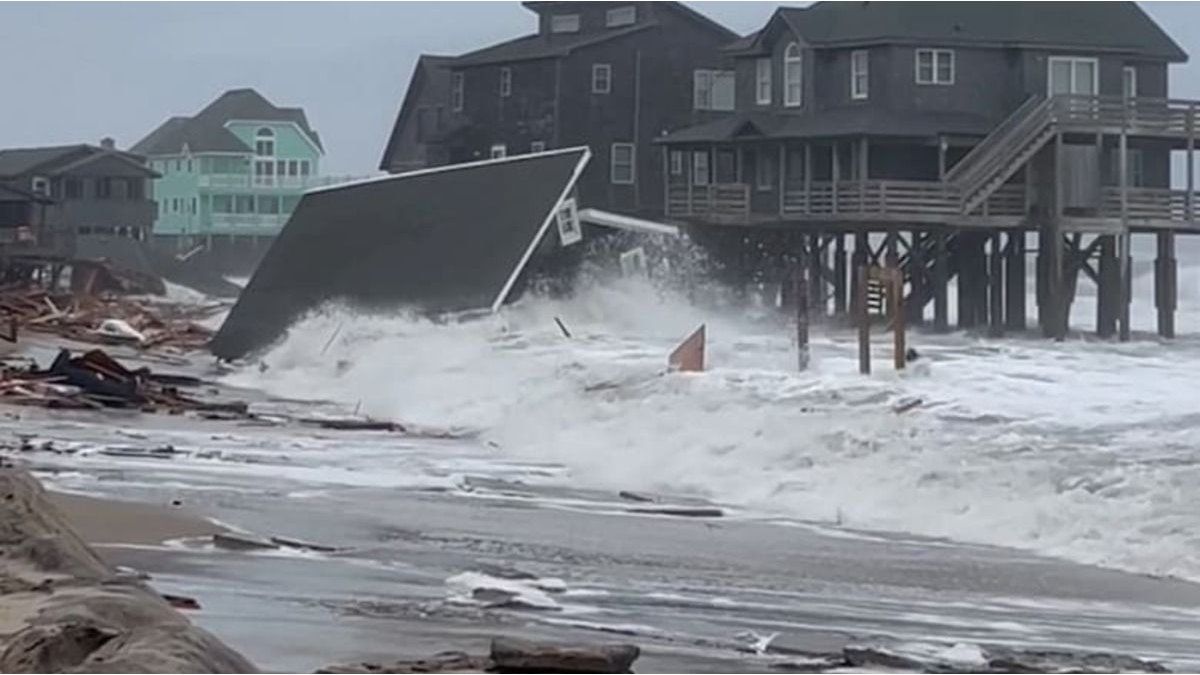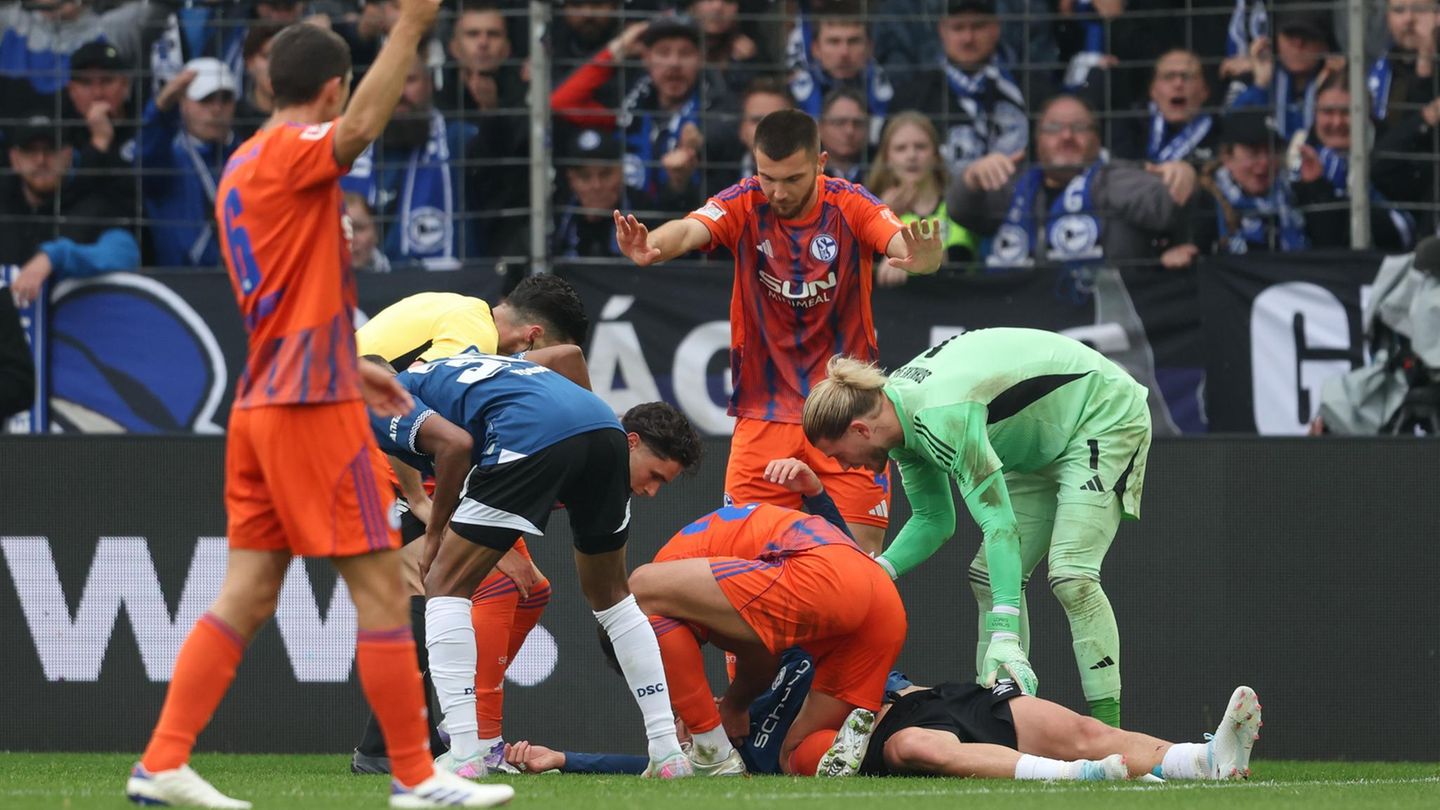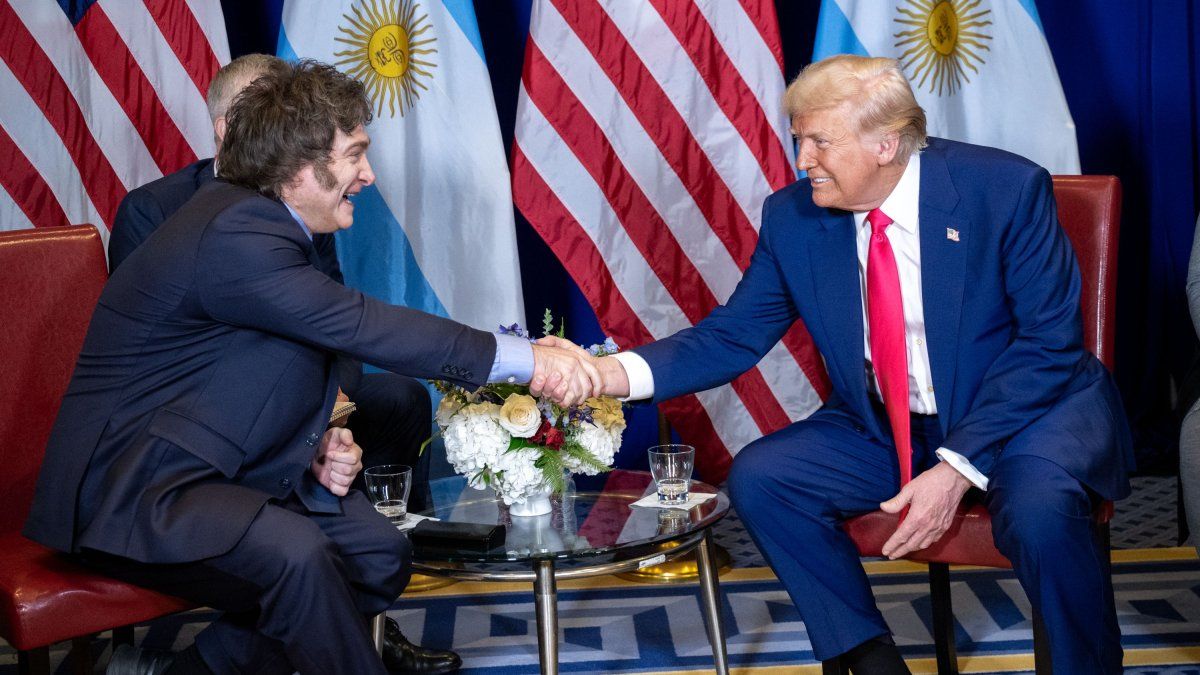As is often the case with artists and creators, Gaby admits that it is hard for her to realize that she has such a prolific and successful career. Let’s just say, he has done so much. That is why the first minutes of the interview she remains standing a meter from the door, contemplating everything. “It’s hard for me to look back” she slips a while later, and gets ready to talk.
Journalist: How did you start to capture this kind of images, like the ones that appear first here, that are part of Aves del Paraíso?
Gabby Herbstein: When I began to turn towards the purely artistic, I remember saying to fashion designers ‘today we are not going to do fashion. Today we are going to make art’ and they looked at me paralyzed (…) but it amazes me when a whole team vibrates at the same frequency and then not only am I the one who knows what to do, but everyone feels it with me.
Q: Okay. But there is no doubt that this image is achieved with some technology. To what extent do you use software for your works?
GH: Well, actually everything I do is staged and photographed. I do not illustrate, that is, I work in my studio recreating what is seen in the photo.
There is also a period theme. When I made Birds of Paradise or even with States of Consciousness, the technologies used today to intervene in human analog creation did not exist.
Q.: Sure, I think of artists like Joss Monzoni, who first sketch something, then put it on the computer and use images created with artificial intelligence, in programs like Midjourney, and then print.
GH: Completely! But that is very new, very current, and although I have a project on my hands that I do plan to work with current technologies, I love setting up everything with my team, in which a lot of people work, and the magical moment happens one second before it clicks.
It is when we stand in front of what we are going to photograph and say ‘we did it’. In everything you see, the only thing I used in post production was Photoshop to generate collages, or retouch minimal defects. The rest is there, many times built especially for the photo: scenery, costumes, skies, objects… and the tricks are all created by hand, or in analog form.
In short, I work with staging, like in a black theater in which what can be seen and what is not, everything is set up for direct shooting. If you look through the eye of the camera, you see exactly the same thing that is now on the wall.
gabi hepstein
For those of us who think with a technological mentality, the weight of craftsmanship in Herbstein’s work is almost unbelievable, knowing that today, digital devices and computer systems available to everyone allow us to trick any kind of image. Let us think, for example, of the Fakes and even Deep Fakes (completely doctored videos in which people who do not exist and never existed speak, or who did live but never said what they seem to say, and so on).
But Gaby takes care of all her analog cameras as her most precious treasures. He has kept the glasses that he used since he began his career, in perfect condition, all in the studio in Paternal, where he displays his talent much closer to the performing arts than to photography as we understand it in this century, that is, crossed by cell phones, selfies, social networks, and repeated to infinity with dubious artistic value.
……………………………………….
A good part of the interview takes place while we look at some photos of States of Consciousness, evidently a work that meant for her to capture her search for answers about the spiritual dimension of the Human Being.
“At my parents’ house we were atheists, so I did not receive training in terms of the spiritual. So I studied Kabbalah for ten years and from there I opened up to all religions and beliefs and found a lot of common ground. So in this work what I show is that raising your state of consciousness is part of the spiritual path of each person, and it is an introspective work, because the more adults we become, we place rational layers over our essence, which do not allow us to connect later with ourselves (…) with what we were when we were born, according to the shamans”.
Q: But beyond all this that is behind the images we see, doesn’t aesthetics prevail, that is, the result you get, from the point of view of the image?
GH: No, always the message is more important. In other words, when this boy and this girl are together -he points to one of the paintings in Birds of Paradise- the idea is not to make it look pretty, or balanced, or anything. If not, say something.
I always have the intention of transmitting a message, which, obviously, can differ with respect to what reaches the observer. In fact, I love the look on the boys’ face, when they approach a painting and tell me ‘this means such a thing’ and I look at them in wonder and say yes, of course, even though that interpretation has never occurred to me! !
Q: Sure. It is that the great unknown of communication, as a symbolic process, is how a message arrives. To what extent what someone wants to convey makes sense to the recipient… And I swear that putting words to what a plastic artist does is truly a challenge.
GH: -He laughs out loud- Well, I’ll tell you what my search is, my intention! Let’s see, everything is floating in the air. I do not share the idea that someone is a creator, but that each person has a look at things. I have a tool, which is photography, with which I express what is happening to me, and the way I see the world. But the world is there, for me as for the rest of the mortals.
Q: But it seems clear that you see something that the rest of us don’t see…
GH: Ok, but that’s not necessarily better.
Q: Well, in any case, it works better in the art market than the photos that I can take, or someone who, perhaps, doesn’t have your talent. In fact, when a name becomes a brand, as in your case, that means that there are people who already trust what you are going to show, because it bears your signature.
GH: Yes it’s correct. Now, my style is to have no style. I never repeat myself, I never do the same.
Once, a gallery owner told me ‘you never ask a model to look at the camera. Frame it like this, put the camera here, and then you’re going to sell more’.
I could not believe it. I kept looking at him and I didn’t know what to answer him. Because, then, what am I, artist or what?
No, I like to feel that with each project I start from scratch.
P: Sure, but you have to consider that someone in their twenties starts from scratch, let’s say.
GH: Yes, of course I have experience, trajectory. I admit that it is difficult for me to take it into account. I recently did a job for National Geographic, Believe to See, in which I got into incredible places, photographing and interviewing people from the most diverse cultures and beliefs, and I really felt that it was a leap into the void.
What I’m saying is that, suppose I reach what we could call consecration or success… what comes next is going down, because you sought to please others before being authentic. The artist who stays on a worthwhile journey is the one who doesn’t betray himself. So, this documentary that I was talking about comes to the story of the spiritual search that I began before, and deepens it.
And tomorrow will be something else, what do I know.
………………………………………
Nubia Abaij and Lucía Cruz join the conversation. Respectively, they represent The Bright Foundation, which promotes the Latin American Festival of Hispanic American Art and Culture, and the gallery.
They are enthusiastic about the first steps that Gaby is taking in Miami, where there is increasing interest in Latin art. “Now comes the month of women, in which we are going to show the talent of Latin women artists by the hand of each consulate -explains Abaij- and in this the work of Juliana Hecker, responsible for cultural promotion within the Argentine consulate, is remarkable. – so that Herbstein’s work is exhibited here today. They really give space to each representative of their country’s culture, and not all of them work with the same effort”.
Lucía, for her part, makes it clear that the gallery’s doors are open to artistic initiatives that represent the cultures of Mexico below, neither more nor less than in a little piece of the United States where Spanish is the dominant language in the community. .
“Suddenly there are extraordinary artists in our countries but in the United States they are not known. Well, the Foundation and the gallery join hands in the mission of promoting these talents, especially since here, in Miami, we are united by those of us who are proud of our nationalities, but we decided to continue our lives in Miami”.
The Gaby Herbstein exhibition will be open to the public until March 5. It means that visitors of the most varied nationalities and cultures will be able to find out what she does and even acquire some of her works.
A small step for Gaby, a big step for Argentine art.
Source: Ambito
I am an author and journalist who has worked in the entertainment industry for over a decade. I currently work as a news editor at a major news website, and my focus is on covering the latest trends in entertainment. I also write occasional pieces for other outlets, and have authored two books about the entertainment industry.




